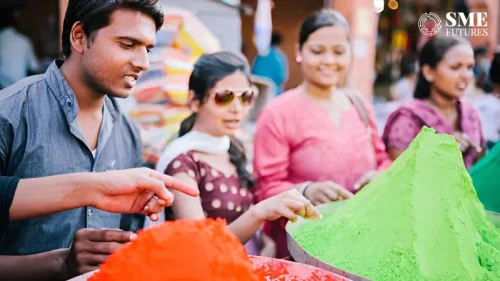There’s the eldercare market out there.
Imagine if you will, a cohort that has spent over 40 years in the service of the nation – that is, every senior citizen above the age of 65 years.
This cohort has a fixed or declining income on account of declining rates of deposit while having to contend with high rates of retail inflation.
Their longevity is accompanied by the threat of medical expenses, the inflation rate which is higher than retail inflation. They do not have the benefit of medical insurance, particularly those with pre-existing conditions.
While being home to a quarter of the world’s senior citizens, only 20 geriatricians graduate every year from medical institutions in this country – Report by KEM, Mumbai in the indexed medical journal, JAPI (Journal of Physicians of India).
And in a matter of a couple of decades, every fifth person in the country will belong to this cohort – The Longitudinal Aging Study in India.
None of the above is in the realms of imagination. This is the reality of India and this is the reason why we need an across the board reimagination of how we will look after the needs and fulfil the requirements of the senior citizens in our country.
The number of senior citizens in India in 2021 were reported to be 138 million. This number is expected to increase by 56 million by 2031 – a 40% increase in a decade. An annual growth rate of 3% means India will be home to 319 million senior citizens in 2050.
In 2020, the ratio of older dependents – people older than 64 – to the working-age population– those in the age group of 15 – 64 was 9.8. This has been steadily increasing at an average annual rate of 1% since 1971. However, with declining birth rates and increasing life expectancy, the old age dependency ratio is also moving northwards.
It is expected that the old age dependency ration will increase from 9.8 to 20.3 in 2050. Hence, looking after the needs of seniors will not just be a family responsibility but will become a community and a national responsibility.
A study by Agewell Foundation shows that for close to 70% of all senior citizens, pension, interest on deposits, dividend on savings and rental from house properties was the main source of income. Worryingly, 5% of respondents had no source of income and only one in eight (11.6%) respondents were engaged in gainful employment.
As is evident, lowering interest rates and ever prevalent (even if static) retail inflation means that the real income of senior citizens is reducing with every passing year. The government needs to create special investment vehicles and opportunities that ensures income security for seniors.
About 70% of the country’s population lives in rural India. With the migration of youth from villages to cities in search of employment, the ratio of senior citizens in rural India is higher than the national average.
As per the National Medical Commission (NMC) Bill of 2019, India has a doctor-population ratio of 1:1456 as compared with the WHO (World Health Organisation) standards of 1:1000.
Furthermore, this paucity is exacerbated by a disproportionate distribution of doctors working in the urban and rural areas with the urban to rural doctor density ratio being 3.8:1. It is only natural that most of our rural and poor population is denied good quality medical care. The report further points out that 57.3% of personnel currently practicing allopathic medicine does not have a medical qualification.
The Ministry of Civil Aviation has come up with innovative solutions to ensure that more and more parts of the country are connected with air services. We need to find creative ways of incentivising doctors and private healthcare operators to provide their services in rural India.
The Longitudinal Aging Study in India (LASI) is a full-scale national survey of scientific investigation of the health, economic, and social determinants and consequences of population aging in India. In its 2022 survey findings, LASI reported that 75% of the elderly suffer from some or the other chronic disease, 40% of the elderly have some form of disability and 20% have issues related to mental health.
COVID – 19 further exposed how fragile and dependent on medical support, elder with pre-existing ailments were. Immuno-compromised seniors suffered the most and had the maximum fatalities during the pandemic.
India is woefully deficient in the availability of trained caregivers for seniors and doctors specialising in geriatric treatment. The same disease affecting a healthy 30 year old and a 70- year-old individual needs to be treated differently on account of various other complications that may exist with the senior citizen. Specialised geriatricians may choose to manage the symptoms of the disease rather than prescribing a cure as the latter may be more damaging to a pre-existing condition.
The government needs to insist on a minimum number of geriatrician seats and programmes at the medical universities in order to ensure that a cohort which is soon going to be a fifth of the population has access to the level of specialised medical care that they will need.
Years added to the back end of one’s life come with additional medical bills and increased expenses. The only option available to seniors is medical insurance. A quick scan of the medical insurance products on offer in the market will show up a distinct lack of any affordable products for individuals over the age of 60.
It is ironic that one cannot ride a two-wheeler or drive a car without having insurance for the vehicle – however, one can go through life without any medical insurance for the human body which is both more complex and more vulnerable to accidents, infections and disease than a metal machine.
Mandatory health insurance, cheaper and more accessible private health insurance are just a few steps to ensure that individuals have the safety net that they need as the body ages and the years roll by.
As is evident, there is no one silver bullet that can address all the needs of senior citizens. What is required is a multifunctional, multi-disciplinary approach that must make the well-being and care of a cohort that has given its all for their families and society, a national priority.
A good start would be a central ministry dedicated to the well-being and betterment of senior citizens besides the work being done by the Ministry of Social Justice and Welfare for senior citizens.











